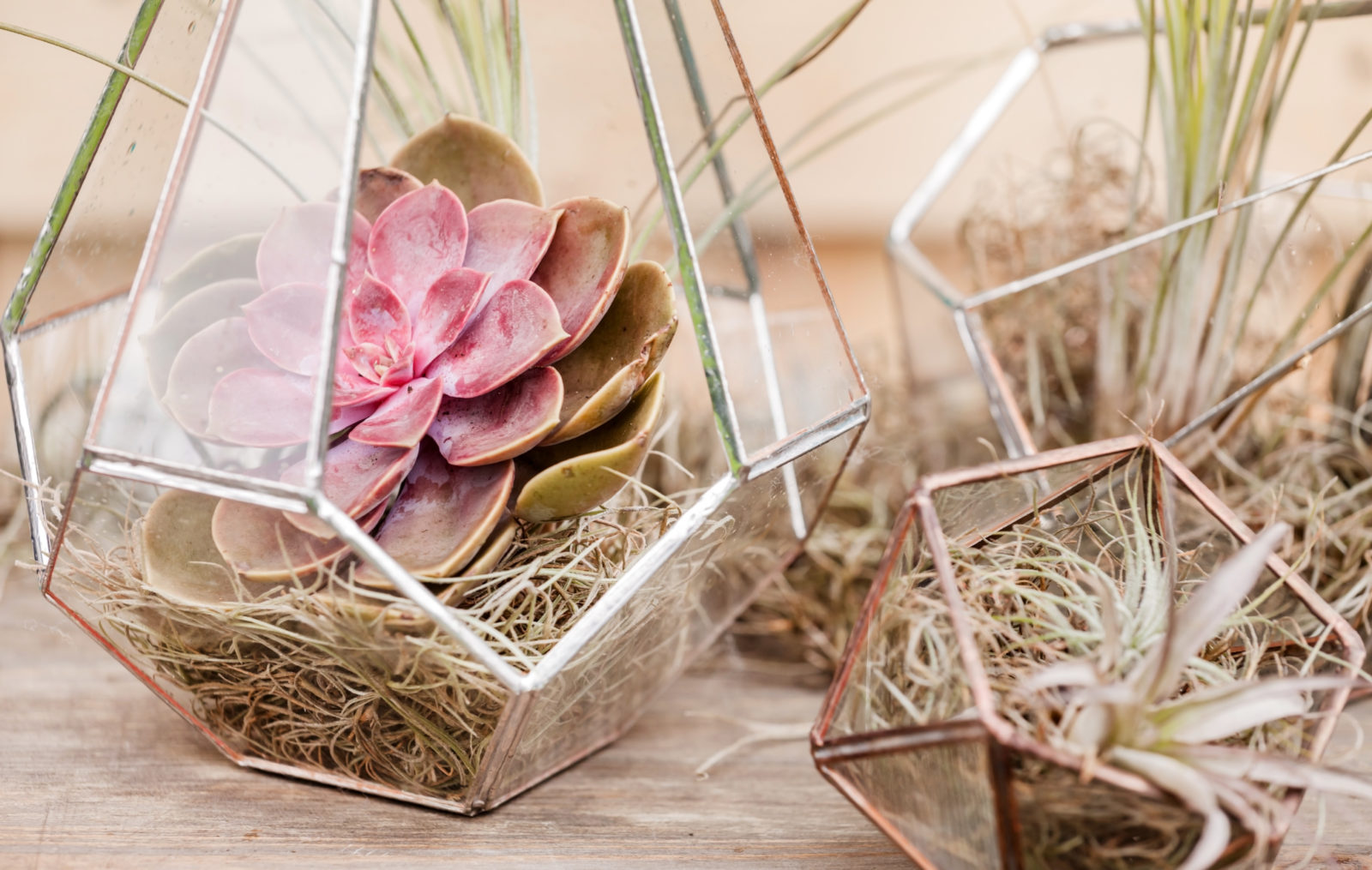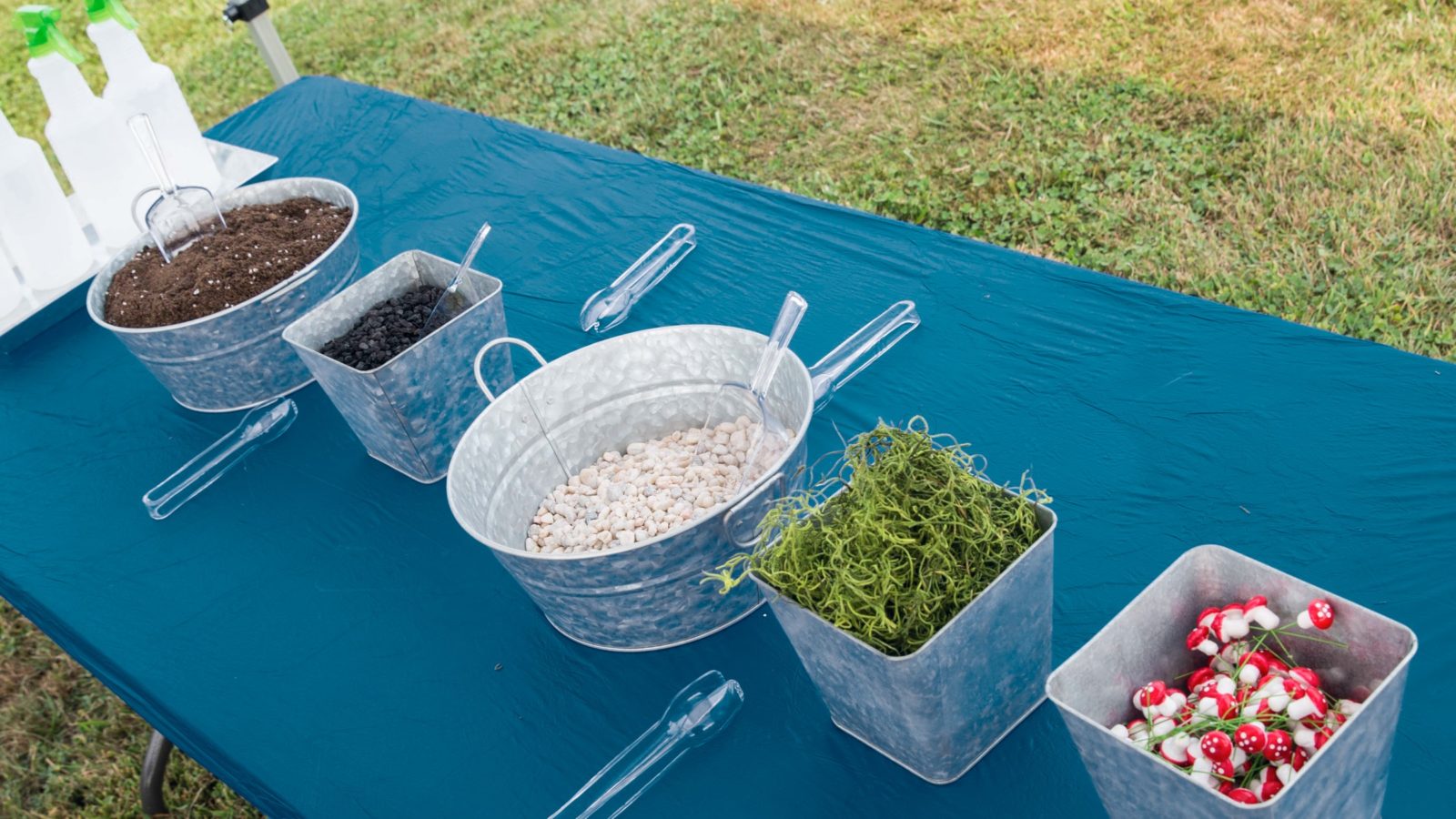How to Build Your Own Terrarium
What cleans the air, lightens the mood, and acts as the perfect Instagram-worthy cubicle accessory? A terrarium, of course! The terrarium trend has caught fire in the last couple of years and shows no signs of stopping anytime soon. These low-maintenance plant habitats make are easy to give, exciting to receive, and enjoyable to make. The only mystery: where to purchase the materials (and what to do with them once they’ve been gathered.) Today, we’re walking you through everything you need to know. Your thumbs will be green in no time.

Step 1: Foraging for Materials
Ten years ago, you’d be hard-pressed to find the materials required to make a terrarium. The word “succulent” would have been met with odd stares. Not anymore. The materials can be found at many home improvement stores, nurseries, and even hobby stores. Here’s what to put on your shopping list.

Containers
In this first category, the world is your oyster. This is your chance to stand out from the pack. Leave Pinterest behind and think outside the box. The great thing about terrariums is they can take almost any shape. Unlike, say, carrots, succulents need little water and little room to grow. As such, look for a container that catches the eye. Glass jars, shallow dishes, and standard pots will certainly suffice. But so will a decommissioned mailbox, antique tin, or even a top hat with a hidden waterproof liner. Investing some creativity in your container will have a big impact on the final wow factor.
Rocks, Charcoal, and Soil
A terrarium features layers of rock, charcoal, and soil, replicating the various materials found among the Earth’s surface. For your rock layer, most any small rock will do. Decorative black river rocks are easy to find and pleasing to the eye. For your charcoal layer, there’s no need to reinvent the wheel. Most any hardware store or garden center will carry it. Just look for a label that specifies “horticultural charcoal.” The rock and charcoal layers act as a drainage system, pulling excess water away from the soil, which would otherwise cause your plants to rot. Your soil search need not be complicated, either. Any planting soil will be perfectly suitable.
Plants
Now to the fun part of your shopping day: the plants! While the most common and popular plants of this year are succulents, a terrarium is more than a collection of succulents. Ferns, moss, and even cacti make for beautiful terrariums. Short on light? Moss is your friend. Just need some plant names to get on with your search? We’ve compiled the most recommended plants from around the web. Here’s what we’ve seen on most lists:
- Friendship Plant
- Victoria Fern
- Polka Dot Plant
- African Violet
- Variegated Spider Fern
- Pollyanna Vine
- Watermelon Peperomia
- Starfish Plant
- Silver Nerve Plant
- Pothos
- Pilea
- Creeping Fig
- Aquamarine
- Croton
- Golden Clubmoss
- Spiderwort

Tools
Now that you’ve gathered your raw materials, it’s time to think about what you’ll need for the assembly process. Your best tools will be your hands, and if you’re on a budget, can be sufficient for the process. But if you’re planning to create a lot of terrariums, or if you’re hosting a terrarium building party, the following tools will make the process a lot cleaner:
- Small scoop for shoveling charcoal and soil
- Wet paper towels for cleaning up spills
- A butter knife for plowing small spaces for plants
Step 2: Laying Your Foundation
Grab that brilliant container and get ready to rock. (Fill with rocks, that is.) Create a base layer of rocks for drainage that fills every part of the container that won’t be taken up by your charcoal, soil, or plants. For a shallow container, this could be as little as 1” of rocks. For a larger container, it could be the bottom 75%. The larger the container, the larger the rock. A tiny terrarium will be best outfitted with small pebbles as a base layer.
Step 3: Charcoal (Even for the Nice List)
Next, scatter your charcoal in an even layer that covers your rocks. Remember: this layer is key to absorbing excess moisture and keeping your hard-sought plants from rotting. Leave it out at your plants’ peril.
Step 4: Soil
You’re getting closer. Shovel in enough soil to cover the roots of your plants. Most terrarium plants have extremely shallow roots, meaning a bag of potting soil will go a long, long way.
Step 5: Get Planting
You’ve arrived at the step you’ve been dreaming of! Time to arrange your carefully curated plants. The most common look is what high-end florists call “Pavé.” A term borrowed from the jewelry world, the Pavé look is a densely packed one. Start with your largest plants and work downward, eventually filling every nook and cranny. Going for something a bit different? Create a spiral of similar plants, starting with the largest and spiraling out to the smallest. Or, go for a minimalist look, displaying nothing but your finest plant find without distraction.
Step 6: Accessorize
Many terrarium builders stop there. But you don’t need to end with plants. Non-living accessories can add some major flair to a terrarium. Dig through your junk drawer, rummage through your garden, and look for small objects of interest. A few charming additions could include:
- Unique twigs
- Seashells
- Small pieces of brass, silver, or copper
- Ribbon
- Fossils
- Petrified wood
- Glass

Taking Care
You did it. You created the centerpiece of a generation. Now it’s ready for prominent display on your coffee table, kitchen counter, or cubicle. Your only task remaining: keeping it alive. Terrariums tend to be forgiving environments, comprised mostly of low-water plants, air plants, and succulents. Nevertheless, a few caretaking tips will keep your creation living long after the dirt has disappeared from under your fingernails:
- Don’t put your terrarium in direct sunlight.
- If condensation appears in your container, you’ve overwatered.
- Water your plants at the first sign of drooping leaves.
Shop List
There you have it! A step-by-step guide to creating a terrarium. Ready to get your hands dirty? Here are a number of links to the materials mentioned above:
- Containers: Hobby Lobby, Michaels, World Market, Ikea
- Rocks: Home Depot, Lowes
- Charcoal: True Value, Amazon
- Soil: Home Depot, Lowes
- Tools: World Market,